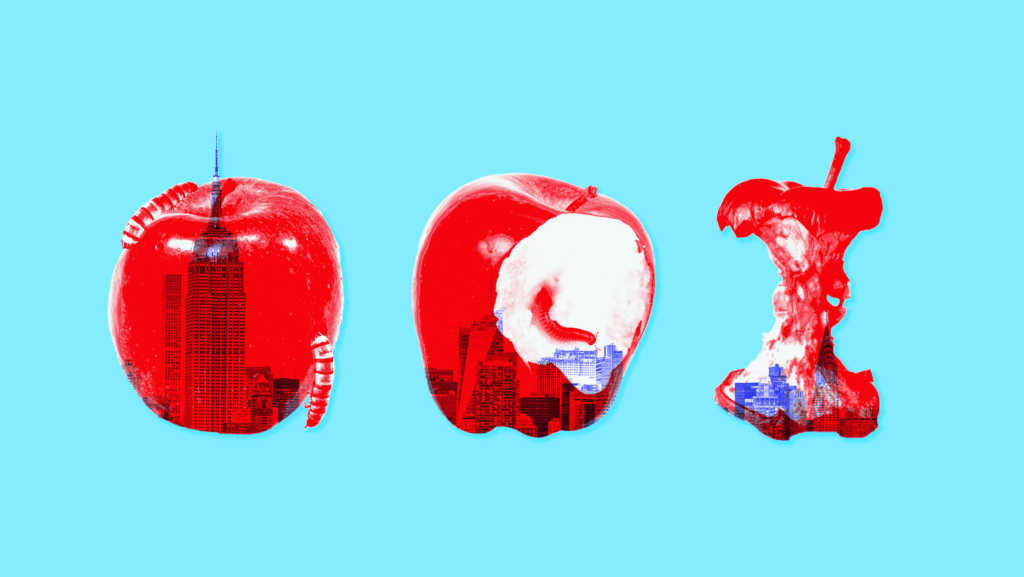New York Has Bad Voting Laws Too

There were not enough polling place locations open, so long lines wrapped around several city blocks. Some voters waited as long as five hours. And, there’s a state law that makes it illegal to distribute snacks to these voters standing in line. This was not in Georgia. Nor Florida.
This was the reality of early voting in New York City in October 2020.
And that’s not the only thing wrong with New York’s elections. Months earlier, officials didn’t mail over 30,000 requested ballots until the day before the primary election and thousands more ballots were later rejected for reasons out of the voter’s control. Two lawsuits filed in the past few months against the state of New York — over this line warming ban and these mail-in ballot rejection practices — demonstrate how bad voting laws are not constrained to red states.
It is illegal in New York to give a water bottle to a voter standing in a long line.
When the Republican-dominated legislatures in Florida and Georgia passed large voter suppression laws last year, there was one provision that stood out — the line warming ban, which makes it illegal to distribute items to voters waiting in line. The provision drew the ire of voting rights advocates and the public alike.
Though enacted years ago, New York state has a similar law on the books. The law states that, “during the hours of voting, on a day of a general, special or primary election,” no person may provide or pay for “any meat, drink, tobacco, refreshment or provision” to “any other person in connection with or in respect of any election.” The ban has limited exceptions and violators are subject to criminal penalties.
Recognizing the detrimental impact of this law on voters, the Brooklyn Branch of the NAACP challenged this law as unconstitutional last September. The distribution of snacks or other items don’t solve the systemic problems of long lines, condensed polling places or election mismanagement, but it allows nonpartisan groups to help voters better endure the wait. While long lines disproportionately impact poor and non-white communities, for elderly and disabled voters, they can be prohibitive. “Thus, while poll lines are an inconvenience for some, for others they are exclusionary obstacles,” write the plaintiffs in their complaint.
In 2020, New York state had the third highest rejection rate of absentee ballots in the country. It’s a systemic problem.
The New York Senate Elections Committee published a report in 2021 that chronicles many of the state’s consistent election problems: “New York’s system of election administration has routinely fallen short in ways that have shaken public confidence, limited participation, and even disenfranchised voters.” Last month, the Democratic Congressional Campaign Committee (DCCC) filed a lawsuit against multiple practices that lead to New York’s exceedingly high rejection rate for mail-in ballots.
For example, a large proportion of the mail-in ballots rejected in the 2020 general election were rejected for “uncurable” reasons — meaning the voter had no opportunity to fix the defect. More often than not, “uncurable” reasons are technical issues that aren’t connected to a voter’s eligibility, such as missing or unmatched signatures, incorrect or missing dates or ballots being returned without the inner envelope or official outer envelope.
The Empire State also disenfranchises voters who cast a ballot outside of their registered county or polling district. In denser areas, like New York City, it’s much more likely for a voter to appear at an unassigned polling location and the complaint chronicles how voters sometimes receive incorrect information or misleading guidance from officials. The lawsuit also challenges the practice of discarding ballots just because the U.S. Postal Service failed to postmark them, a factor completely beyond the voter’s control.
When we saw unusually high rates of ballot rejections in Texas for this month’s primary election, that was by design — the newly enacted law had the specific goal of disenfranchising voters. In contrast, New York has simply not updated old laws or prioritized fixing their systems of election administration. Unfortunately, the impact is the same: for some voters, the right to have their vote counted is just an illusion.
Blue states aren’t immune from bad voting laws and election mismanagement. Leaders in states like New York are failing to fulfill the promises and priorities of the Democratic party — it is time for them to fix old laws, pass new ones and do whatever it takes to continue advancing voting rights. And if elected officials don’t, then lawsuits like these are essential to protecting the right to vote.